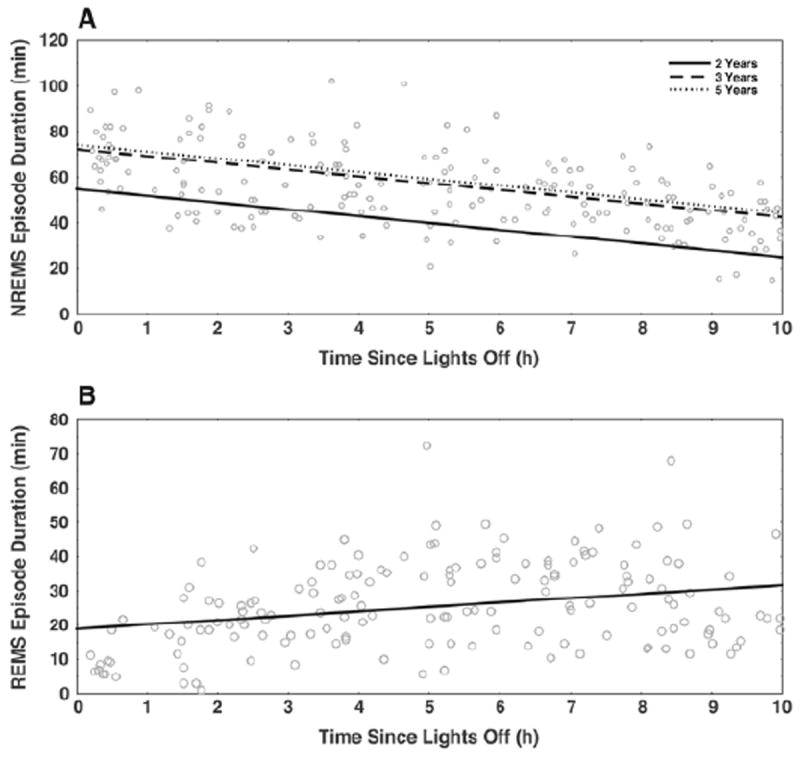Figure 3.

Linear model shows how NREM and REM sleep episode durations change with time since lights-off. At all ages, after accounting for subject effects, NREM sleep episode duration decreased (A) (slope coefficient −2.97 min/h since lights-off, p < 0.01) while REM sleep episode duration increased (B) (slope coefficient 1.28 min/h since lights-off, p < 0.01) with time since lights-off. Ages 2Y, 3Y, and 5Y had statistically different intercepts (2Y, 62.4 min; 3Y, 66.3 min; 5Y, 70.7 min; 3Y-2Y p = 0.10; 5Y-2Y p = 0.001) but not statistically different slope coefficients for NREM sleep episode duration (−2.97 min/h, p = 0.12); for REM sleep episode duration, neither slopes nor intercepts were significantly different between ages (slope for all data, 1.27 min/h; intercept for all data 18.87 min).
